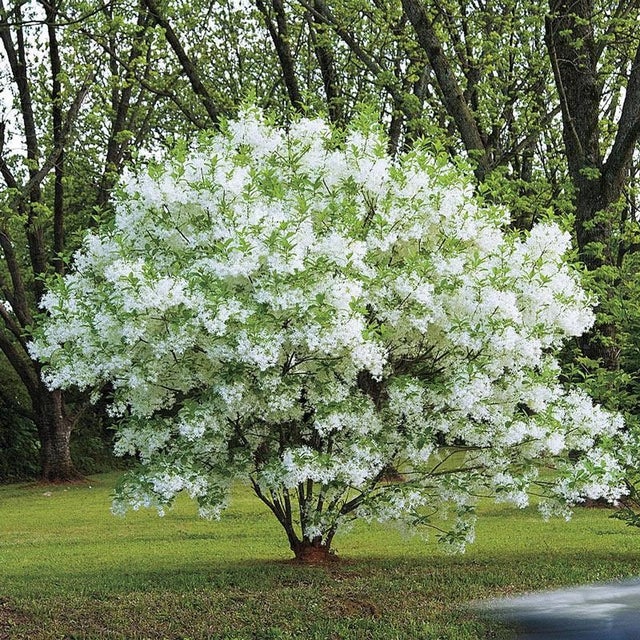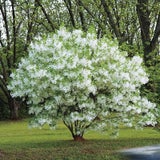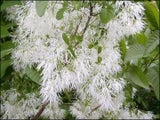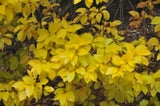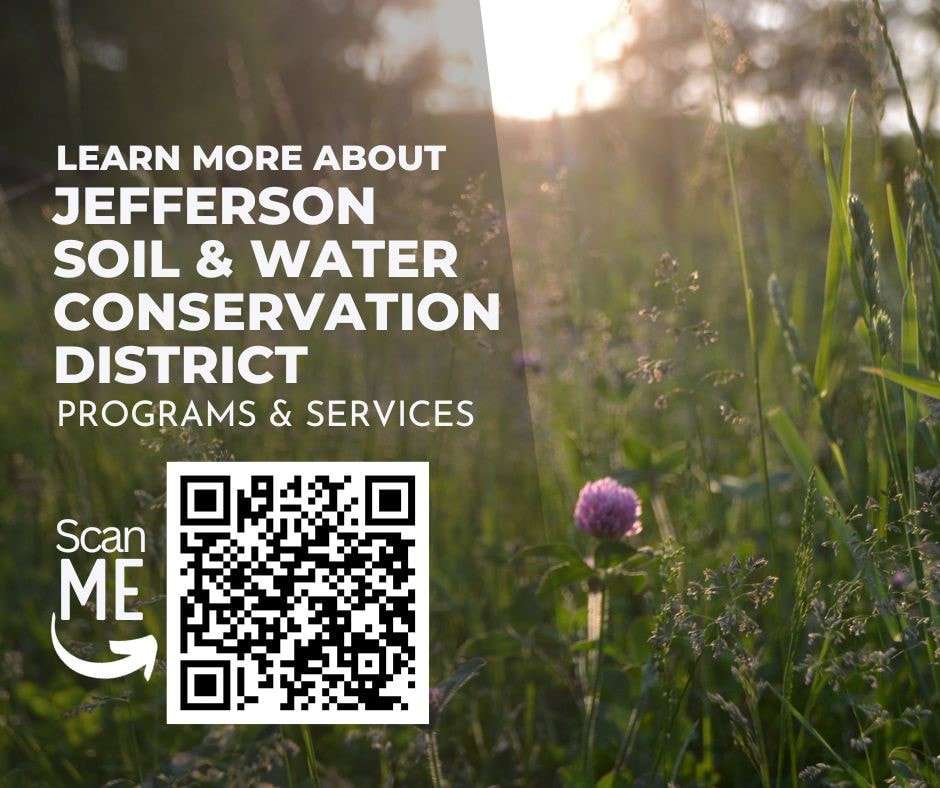- 2024 Native Trees
- >
- Native Trees
- >
- Fringe Tree (Chionanthus virginicus)
Fringe Tree (Chionanthus virginicus)
Height: 12 to 20 feet
Spread: 12 to 20 feet
Bloom Time: May-June
Bloom Description: Creamy white
Sun: Full sun to part shade
Water: Medium
Maintenance: Low
Suggested Use: Flowering Tree
Flower: Showy and Fragrant
Attracts: Birds, Butterflies
Native to: Appalachia
Walnut Resistant
The fringe tree is a special little tree that is a bit of a non-descript wallflower throughout the year, but come late spring puts on a dazzling display of splendor when the tree erupts with showy fragrant white blooms.
The tree was first collected in 1678 by a young clergyman, John Banister from a streambank in Virginia. John Bartram identified the tree in the 1730s. In 1756, William Bartram, John’s son, painted a picture of the fringe tree with a yellow-throated vireo in it, which John sent to his patron Peter Collinson in London along with some seeds. Collinson described the tree as having a “delightful natural freedom through the whole.” While serving as minister to France, Thomas Jefferson wrote to Bartram requesting seeds of the fringe tree so he could distribute them to the French as a sign of America’s growing and beautiful alliance with the country.
The tree is very late to leaf out in the spring and when it does the flowers are right behind. The tree tolerates city life and air pollution remarkably well, and is a slow grower with a 14-year-old tree only being about 12 foot tall. The tree will produce clusters of blue-black drupes, about ½ inch long. These fruits are a great source of food birds and are an additional source of visual appeal in the garden.
Insects also benefit from fringe tree. It is host to several species of native sphinx moths, including the rustic sphinx moth and 11 additional species of pollinators including the eastern tiger swallow-tail.
The fringe tree is a dioecious species with separate male and female plants. The trees offered in the Jefferson Soil and Water Conservation District Native Tree Sale are unsexed trees, so it is recommended to buy multiple trees. ■

